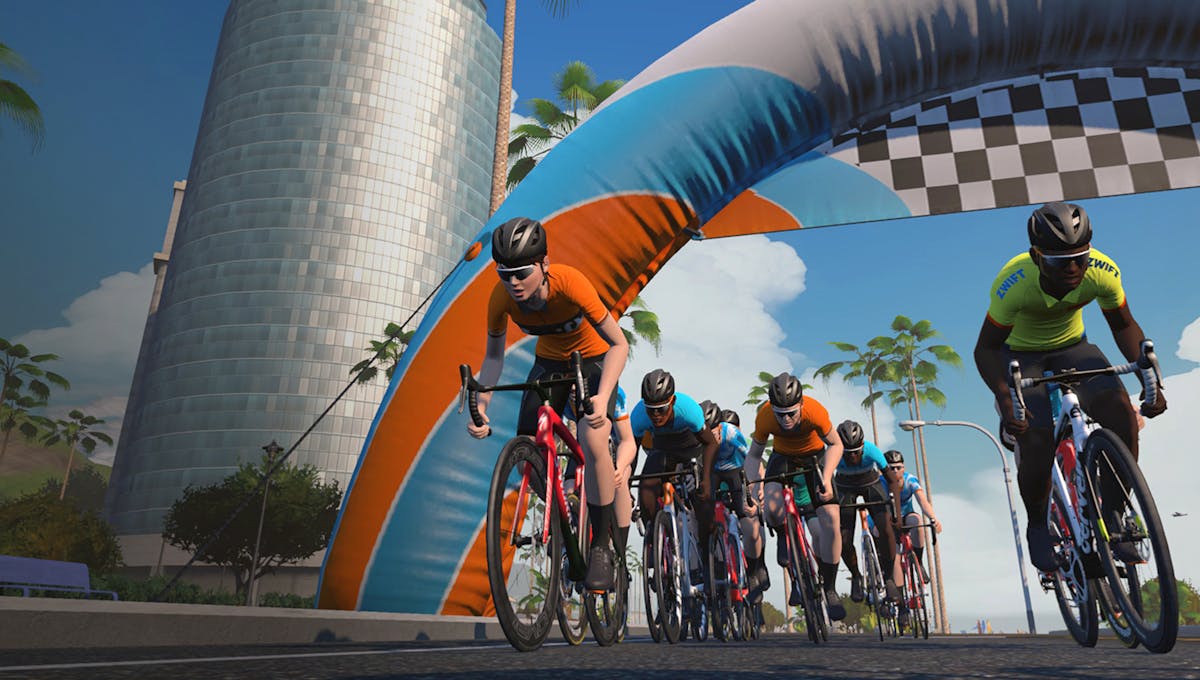Zwift Steps Back from Elite Esports: What It Means for Riders
Zwift is scaling back elite esports racing and pausing Zwift Academy in 2025. Learn how this shift impacts pros, community riders, and the future of virtual cycling.

In a quiet but significant move, Zwift—the platform that helped ignite the global cycling esports boom—has confirmed it will no longer organize or fund elite-level virtual racing at the scale it once did. This means an end to big prize purses, high-production broadcasts, and independently governed elite leagues like the Zwift World Series.
While the platform has not issued a formal press release, the shift has been communicated through internal channels and confirmed in response to user inquiries. The decision follows the migration of high-profile events such as the UCI Cycling Esports World Championships and USA Cycling Esports Nationals to other platforms like MyWhoosh—a trend many in the community saw coming.
Why Is Zwift Making This Change?
Zwift’s reasoning is clear: producing elite esports is expensive. Between performance verification, anti-cheat technology, media partnerships, prize money, and live production costs, maintaining a top-tier racing circuit proved unsustainable.
As one insider noted, “The resources required to deliver credible, broadcast-ready elite racing are immense. Zwift is choosing to invest where it sees the most value: in its community.”
Indeed, more than 30,000 riders participate in Zwift races each year—the vast majority of whom are amateur and community racers. By refocusing on this broader base, Zwift aims to foster growth from the ground up rather than the top down.
What’s Staying and What’s Changing?
What’s ending or scaled back:
- Elite racing leagues with significant prize money
- High-cost live broadcast productions
- The Zwift Academy program is paused for 2025 (though it will return in 2026 for its 10th anniversary)
What’s staying and even expanding:
- Community racing remains central—riders can still join races almost any time of day
- The Zwift Racing League (ZRL) has been relaunched with improved ranking and anti-botting measures
- Events like the Zwift Games will continue to include advanced categories, though without the financial incentives or production gloss of past years
The Impact on Riders and the Ecosystem
For professional and aspiring esports cyclists, this is a blow. The Zwift Academy—which helped launch the careers of WorldTour riders like Jay Vine (Alpecin-Deceuninck) and Neve Bradbury (Canyon-SRAM)—has been a proven pathway to the pros. Its one-year pause, along with the reduction in elite racing opportunities, means fewer visible, high-stakes platforms for top riders in the immediate future.
For everyday Zwift users, however, the change may be a net positive. The company is doubling down on features that improve the experience for the broader community: better matchmaking, stronger anti-cheat protocols, and more accessible racing formats.
This “bottom-up” strategy aligns with Zwift’s origin story—a platform built to make indoor cycling engaging and social for everyone, not just the elite few.
The Bigger Picture: Esports Fragmentation and Future Opportunities
Zwift’s pullback creates opportunities for other platforms—like MyWhoosh, ROUVY, and others—to fill the void in elite esports production. It also reflects a broader maturation of the virtual cycling landscape, where no single platform dominates the competitive scene entirely.
What remains critical, regardless of platform, is integrity. The issue of “robo-doping” (using bots or manipulated data) has plagued esports racing. Zwift’s continued investment in verification technology signals that fairness remains a priority, even as the focus shifts away from elite spectacle.
Looking Ahead
Zwift isn’t leaving racing behind—it’s recalibrating. The company continues to release new hardware, like the Wahoo KICKR Core 2 trainer with Zwift Cog integration, aimed at making indoor riding more accessible and enjoyable for all.
Elite racing may be taking a back seat for now, but community racing is stronger than ever. And with the Zwift Academy set to return in 2026 with a renewed focus on talent identification, there’s still hope for the next generation of esports pros.
For now, Zwift is betting on its community—the riders who log on daily to train, compete, and connect. And in many ways, that’s a return to what made Zwift revolutionary in the first place.





